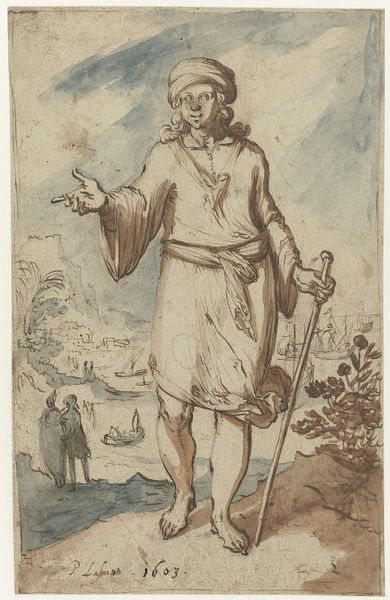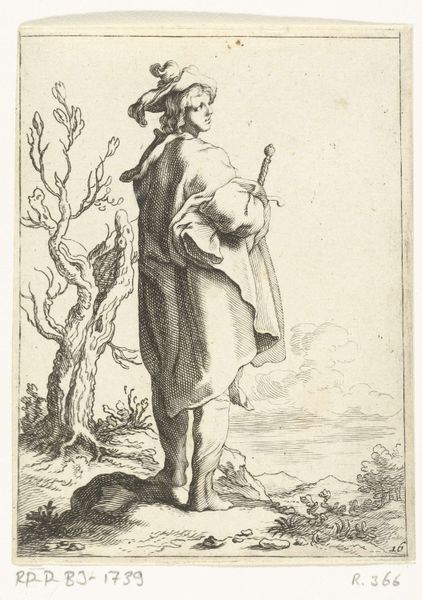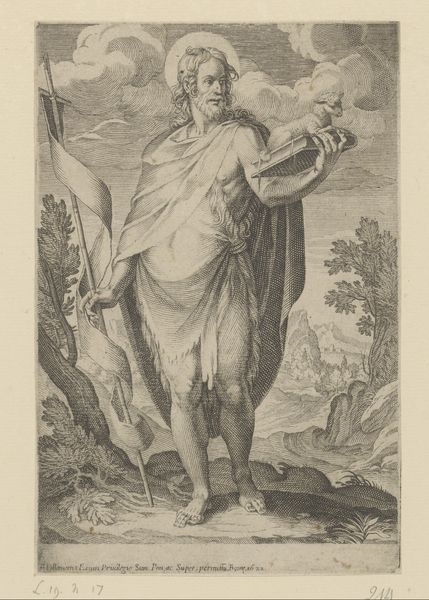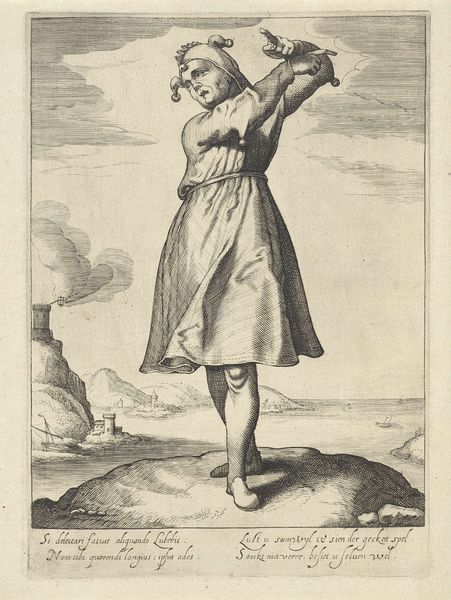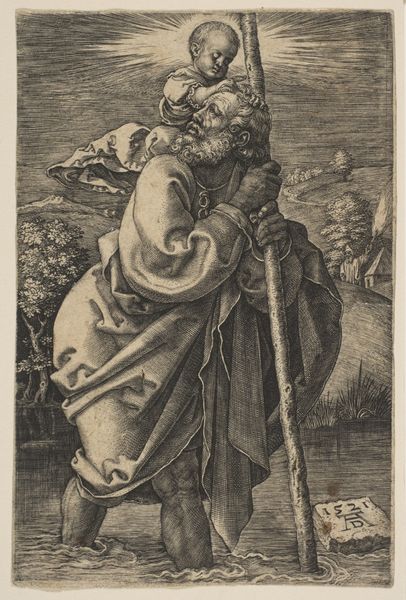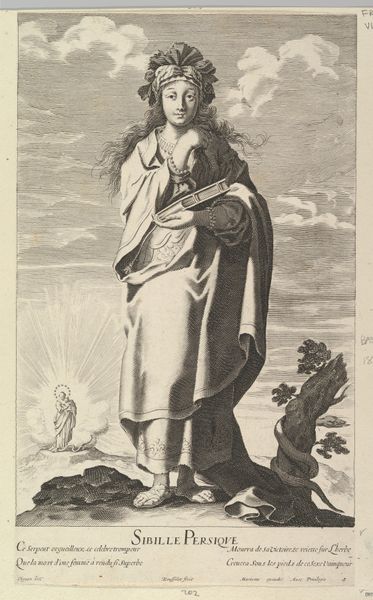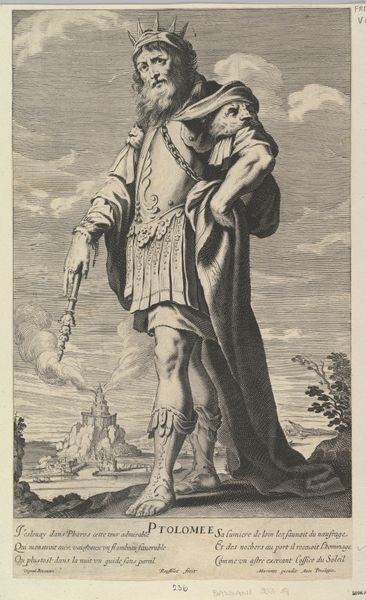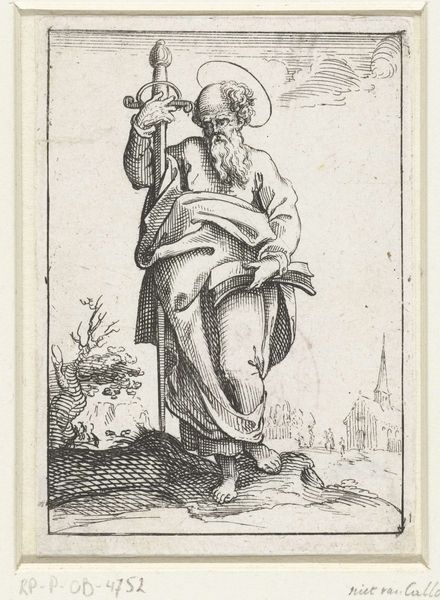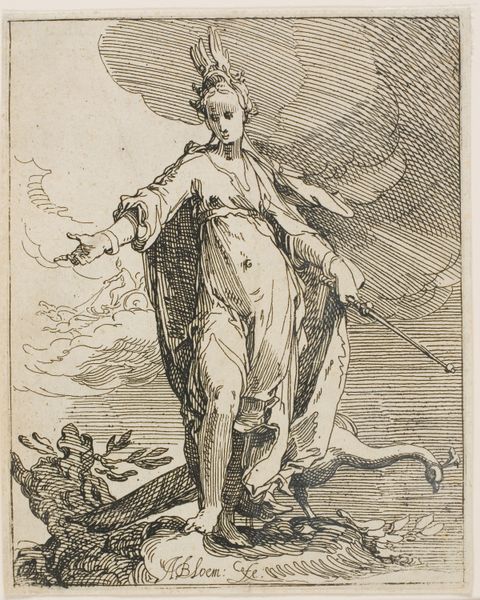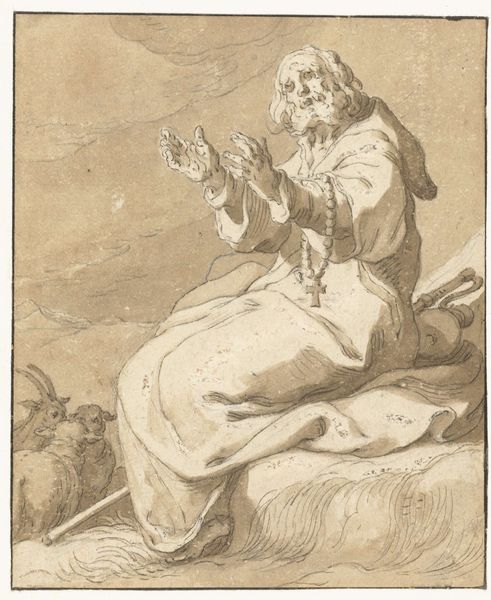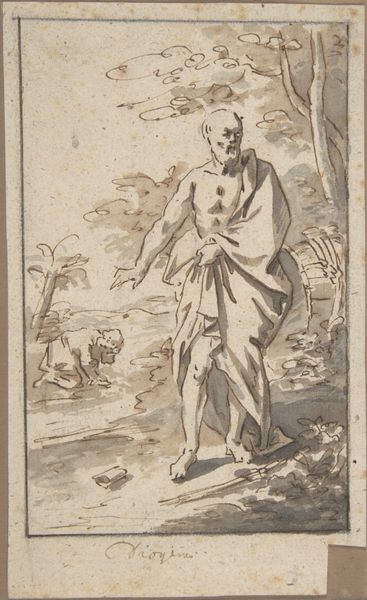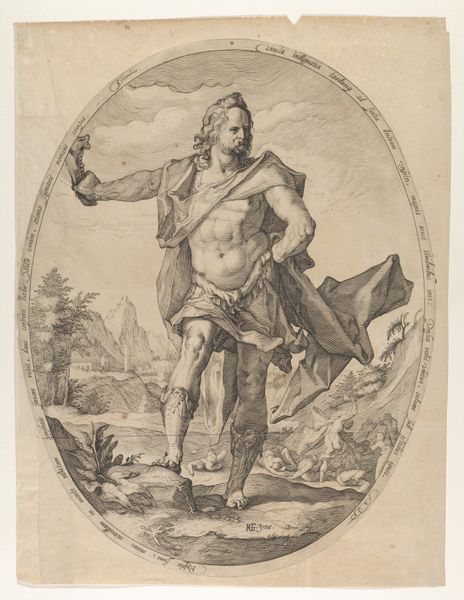
drawing, ink
#
portrait
#
drawing
#
baroque
#
landscape
#
ink
Dimensions: height 270 mm, width 172 mm
Copyright: Rijks Museum: Open Domain
Editor: So this ink drawing, "Standing Figure with a Turban, Seen from the Side," was created by Pieter Lastman in 1603. I’m really drawn to the landscape elements he includes. It feels theatrical. What do you make of it? Curator: That theatrical quality speaks volumes. Consider the context: the rise of the Dutch Republic and its burgeoning trade networks. Lastman was deeply interested in biblical and mythological scenes. This figure, with his turban and staff, isn't simply a portrait, but carries connotations of the 'exotic' and of travelers and traders encountering foreign cultures. What role do you think such depictions played in shaping Dutch perceptions of the world beyond Europe? Editor: That’s a really interesting angle. So, it's less about accurate representation, and more about projecting a specific image, maybe a carefully constructed one? Curator: Precisely. It’s vital to remember that Lastman worked for a specific audience, one that was actively shaping its own identity through commerce and exploration. How do the figures in the background play into this idea? Are they spectators, participants, or something else entirely? Editor: They're smaller, definitely background figures, so maybe witnesses to this exchange between the Dutch and this 'exotic' figure? Sort of claiming authority? Curator: That tension between observation and authority is crucial to understanding how the Dutch constructed their position in the world through images like this one. Even seemingly straightforward depictions can be profoundly enmeshed in the socio-political currents of their time. Editor: I see, I’d been focusing on just the surface-level imagery. Thinking about it within the culture that made and viewed the piece is such a broader view. Curator: Absolutely. It is about connecting the artist's hand to the currents of power, identity, and representation flowing through 17th-century Dutch society. There is an artist *and* a society, after all. Editor: Thanks, it’s changed my thinking on how images are read so much.
Comments
rijksmuseum about 2 years ago
⋮
Lastman drew this sympathetic young man wearing a turban and a graceful tunic in two different poses at the beginning of his career. The influence of the Mannerist style of his teacher Gerrit Pietersz can still be discerned: notice the elongated, elegant fingers and pointed toes. The inscription ‘P. Lastman’ on both sheets was added by their later owner Gerard ter Borch the Elder, with whom Lastman became acquainted in Rome.
Join the conversation
Join millions of artists and users on Artera today and experience the ultimate creative platform.
